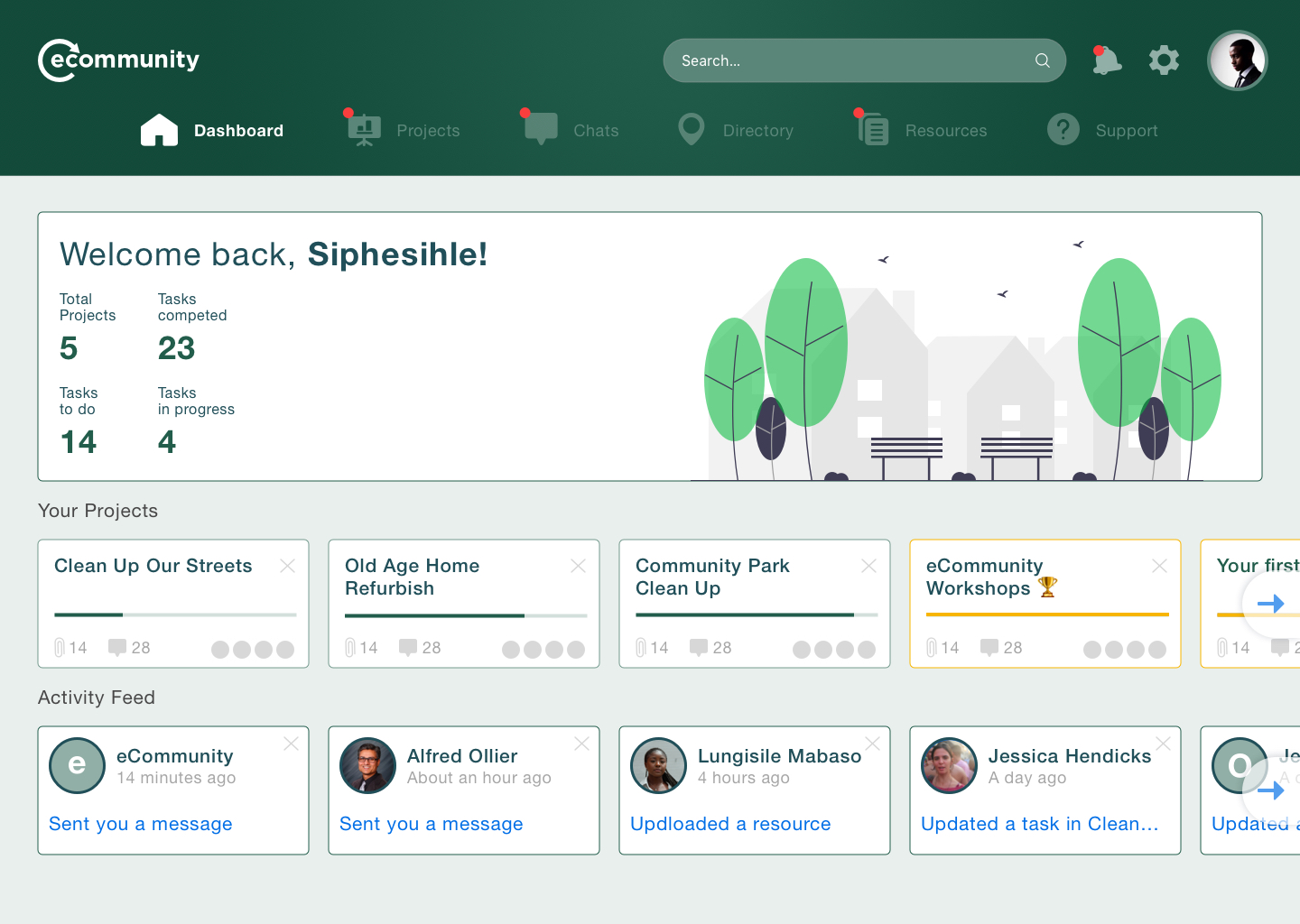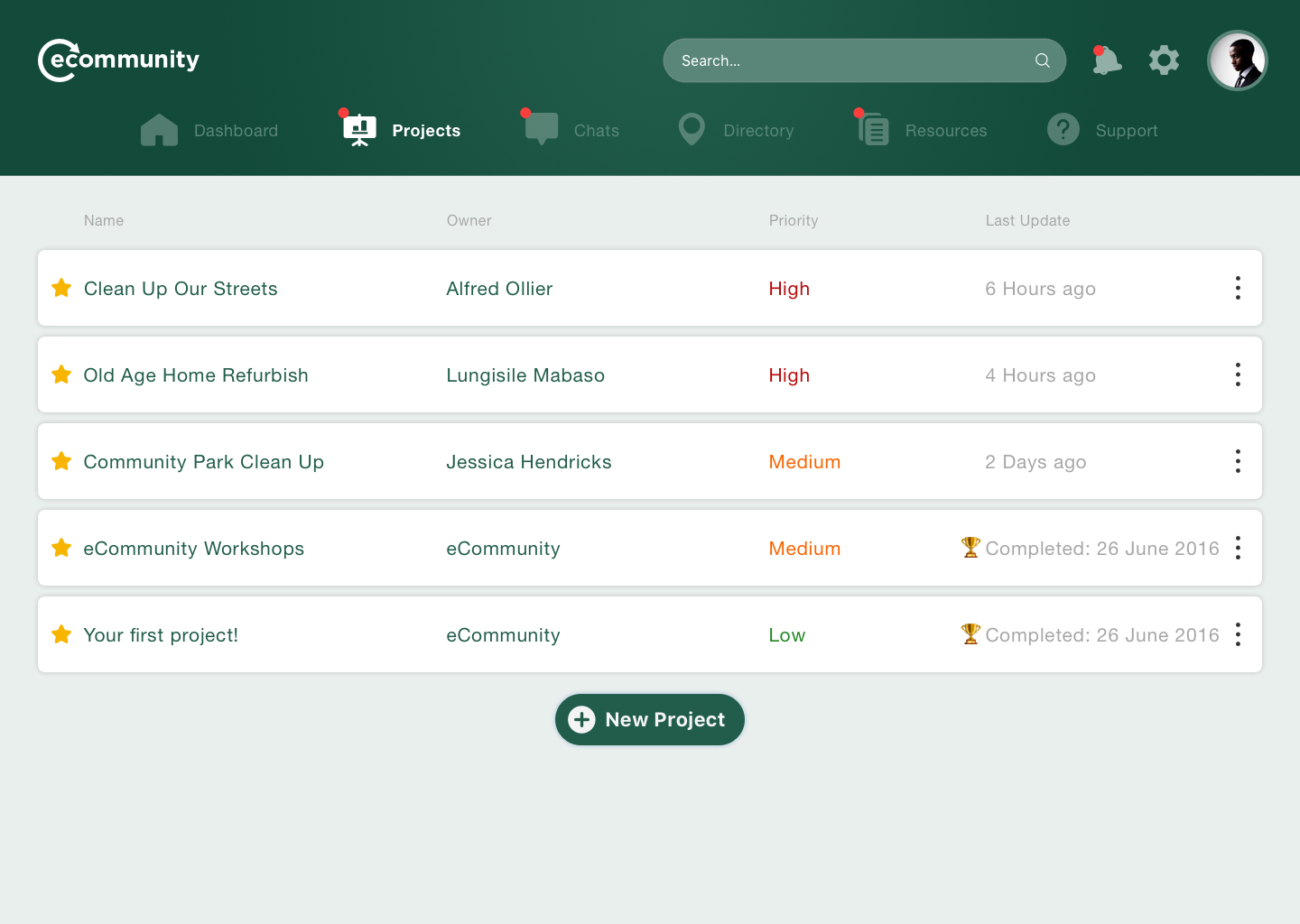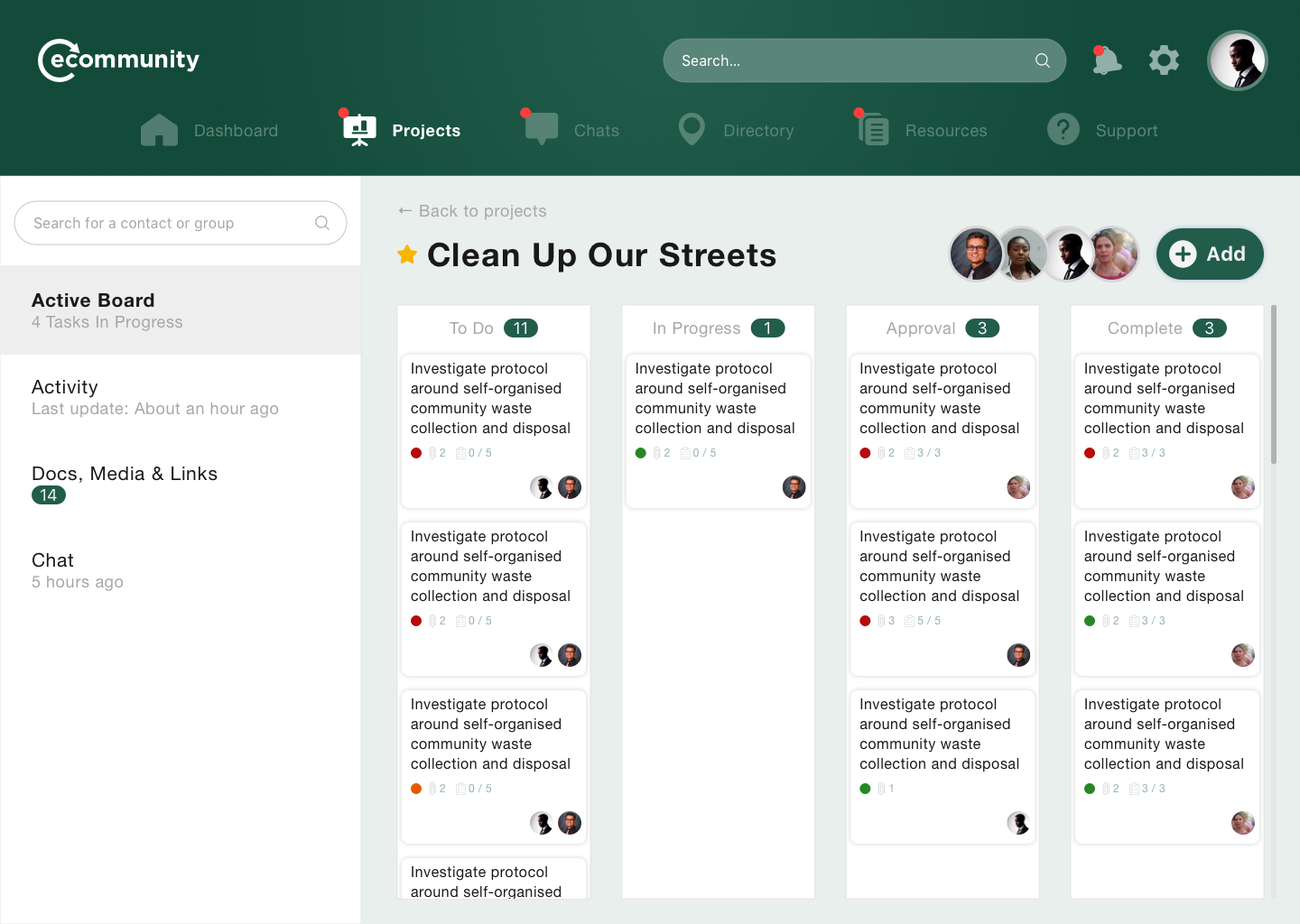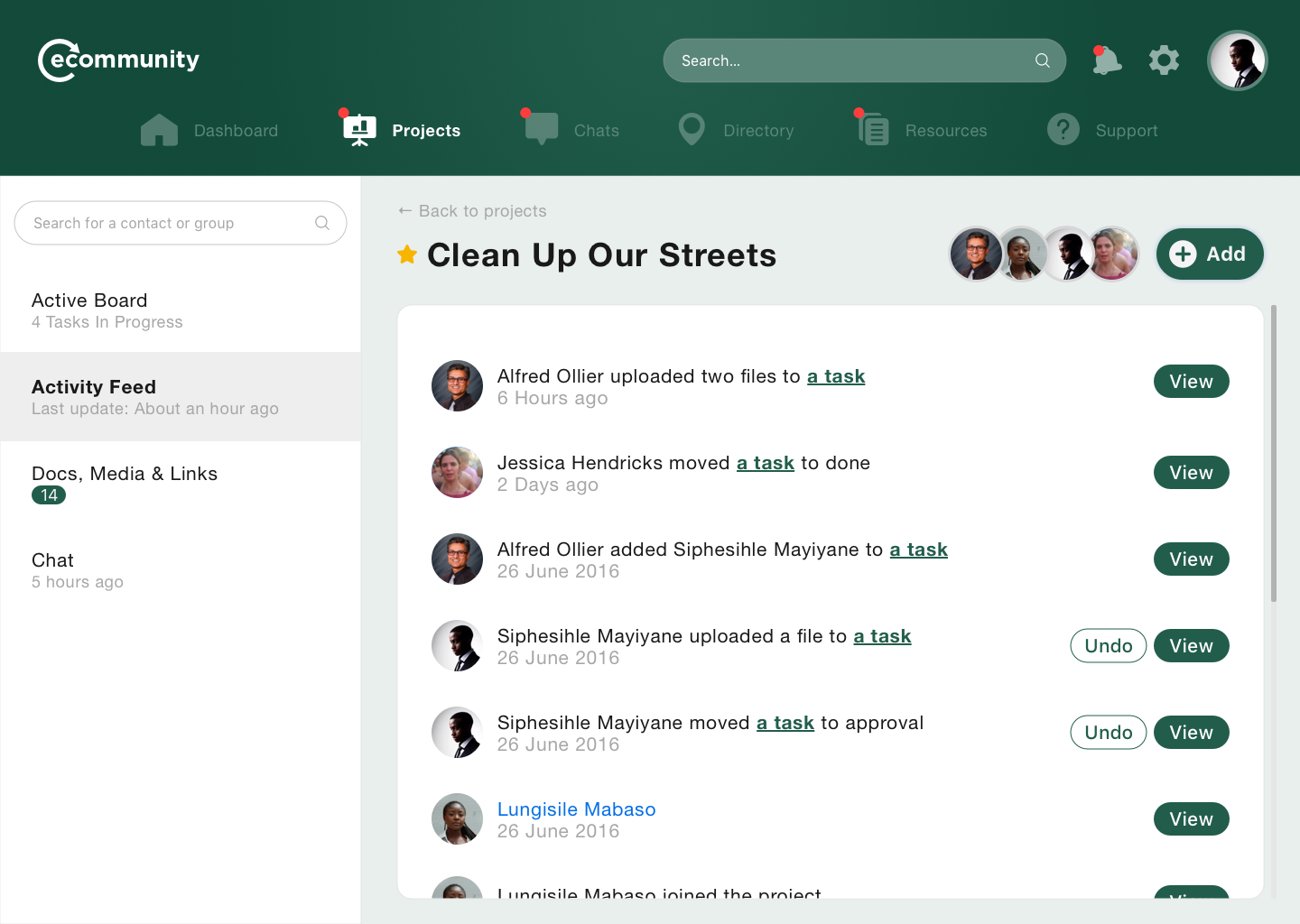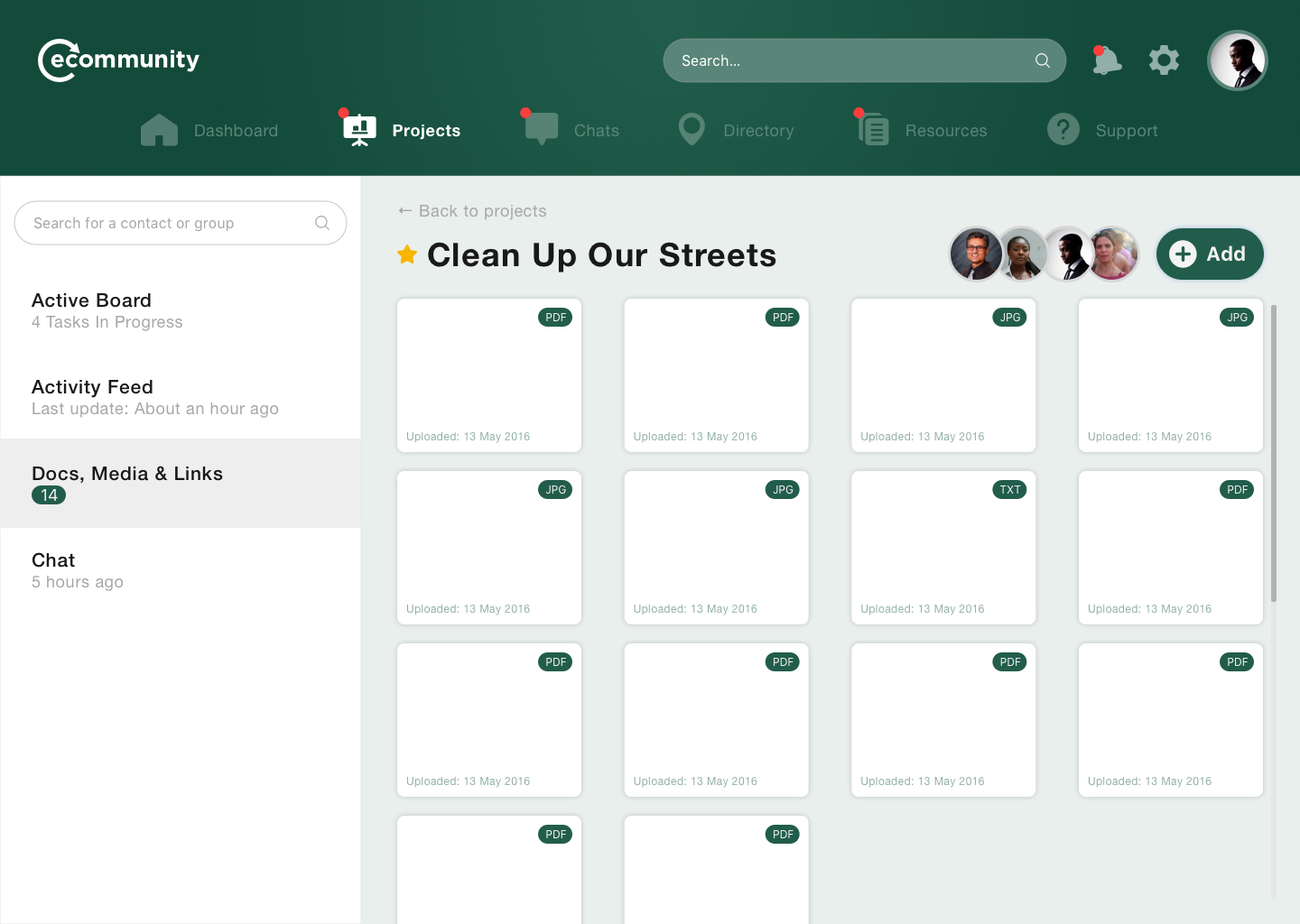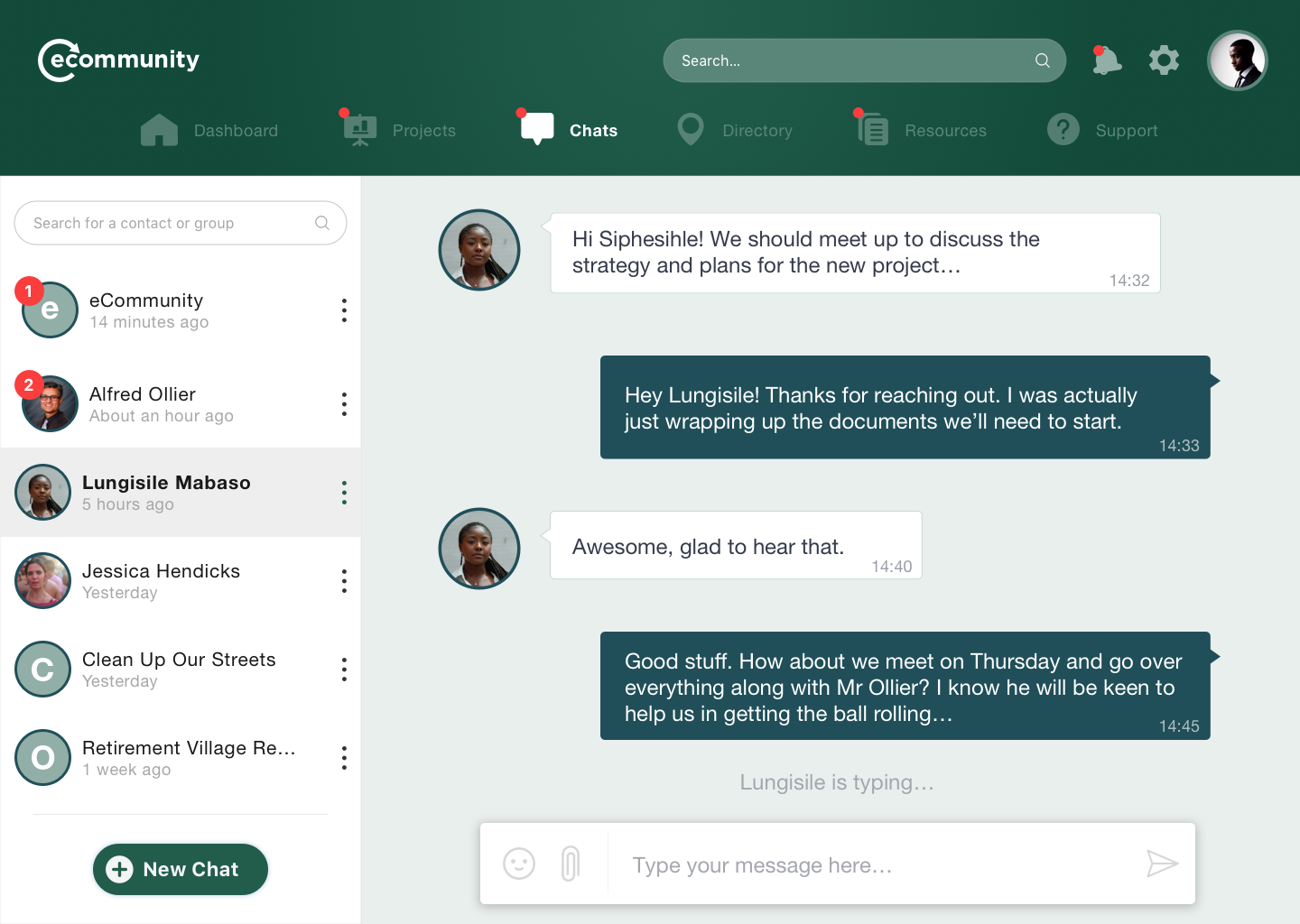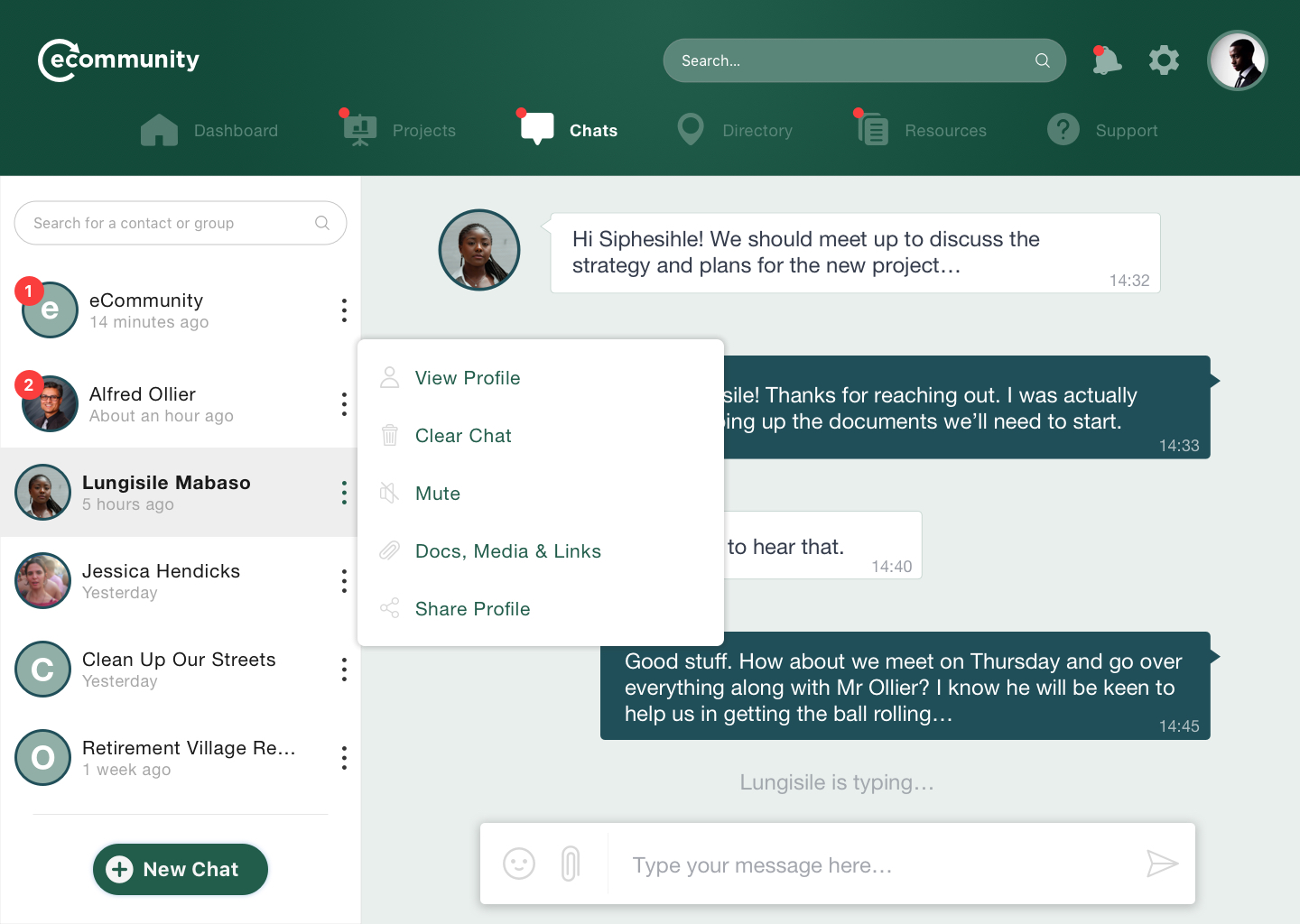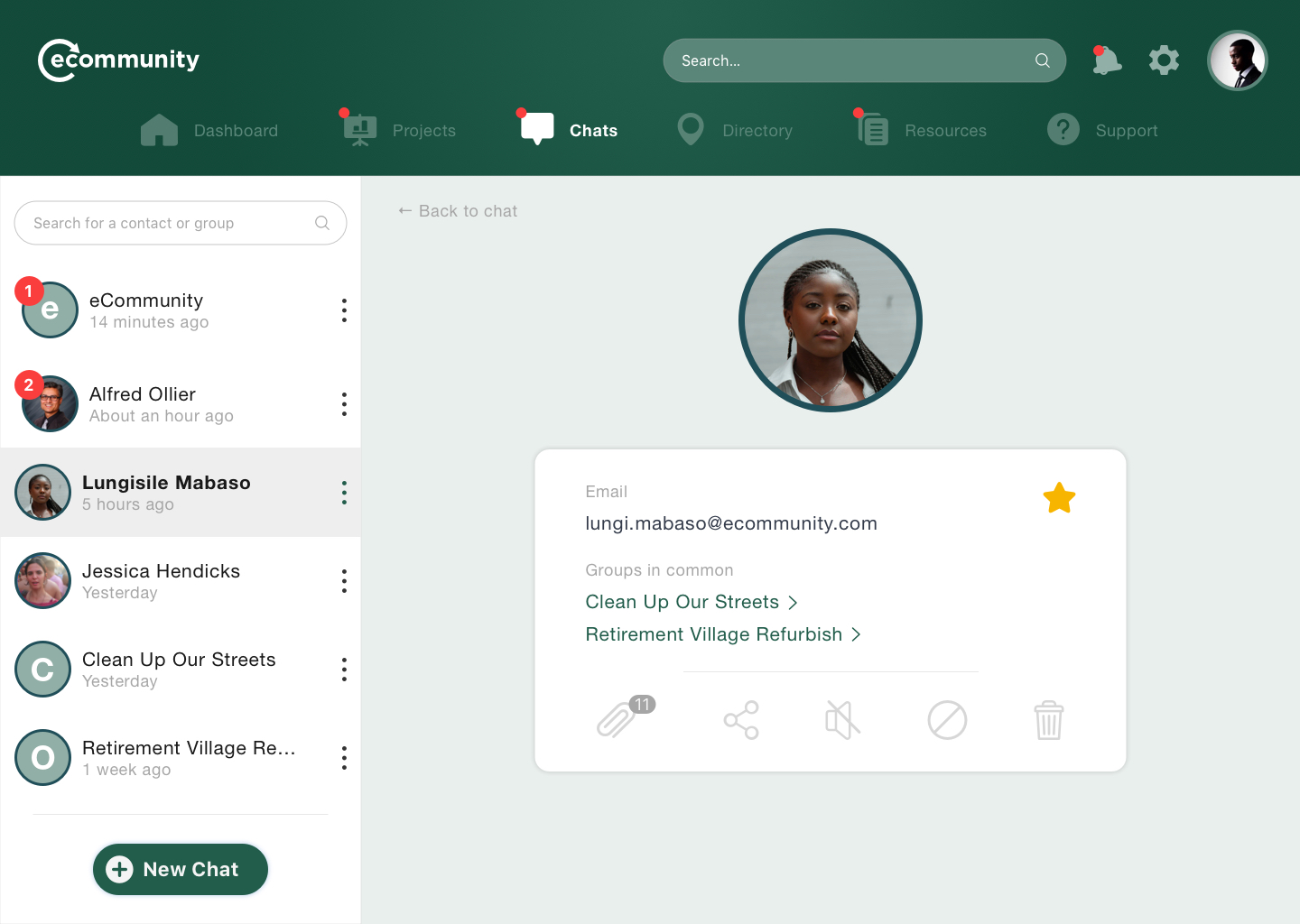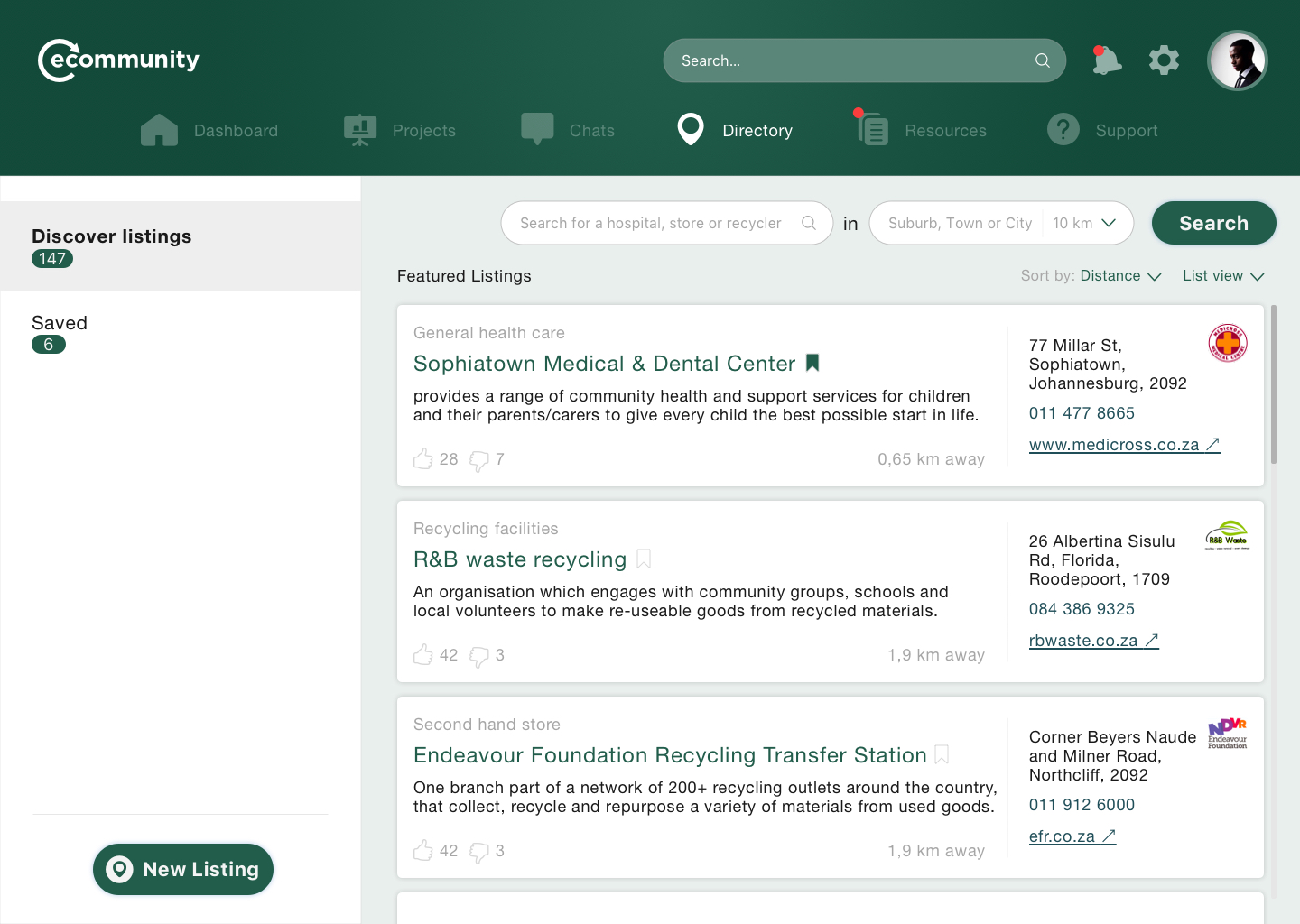About the project
Problem: The focus of the project was on sustainable and effective waste management as driven by the perceived need for civic independence with regards to volatile service delivery by local municipality. This referring particularly to strikes by workers of urban sanitation companies such as Pikitup as seen on numerous occasions within urban areas all around Johannesburg.
Solution: The end result was a web based project management and collaboration tool designed to enable communities to be more self sufficient.
My role: I was involved throughout the whole UX process with guidance from my lecturer and other study leaders. They helped supervise the process of gathering data / information during the research phase, unpacking the problem and the formulation of a strategic framework that would inform the ideation phase. I was then able to iterate and achieve a baseline prototype.
Conceptualise a digital solution that reduces the overall burden in sourcing information on household waste management, enable communication between active members of the Sophiatown and allow for project management and organisation.

Understanding The Problem
In the research phase, I interviewed four neighbourhood residents, conducted desktop research and observations to examine the life of Sophiatown residents and identifying their needs and the factors that influence their waste management habits. I was essentially looking for answers to questions such as:
- What are the major challenges faced by residents with regards to waste management?
- What methods do residents make use of to dispose of waste within their homes under regular circumstances?
- Do they know of any recycling facilities in and around Sophiatown?
- How do they dispose of waste during municipal worker strikes?
My user group included 4 different interviewees that are representative of different households and individuals with differring degrees of influence within the household. This allowed for me to gauge the different kinds of challenges faced, needs and goals each interviewee has.
Most residents stated that having limited knowledge on things they could do within their homes to encourage recycling as an alternative to simply having waste taken away to be disposed of, particularly when municipal waste collection service workers go on strike.
Access information around the waste disposal process as well as it's impact was also a large theme that came up. The desire for residents to know how to sort their waste for recycling was the insight that would form the golden thread for this project as a whole, this also highlighted that they did not know of any recylcling and safe waste disposal sites apart from the nearby Pikitup depot.
Observations were conducted within the homes of interviewees as well as neighbourhood streets to identify behaviours and problems that residents face everyday but don't notice or talk about. Findings showed that residents familiar with recycling guidelines for product packaging, nor do they know how sort each item.
Conducted to broaden the scope of my research and overall understanding of the problem.
Framing The Problem
I brought together all the research data and recorded them under high-level themes that allowed me to determine key focus areas that would inform my personas and overall strategy to a digital solution.
To get an in-depth analysis of the qualitative research data, I used affinity diagramming to synthesise and paint a clearer picture of the problem by grouping insights of a similar nature, creating thematic clusters that spoke to the higher level touch points.
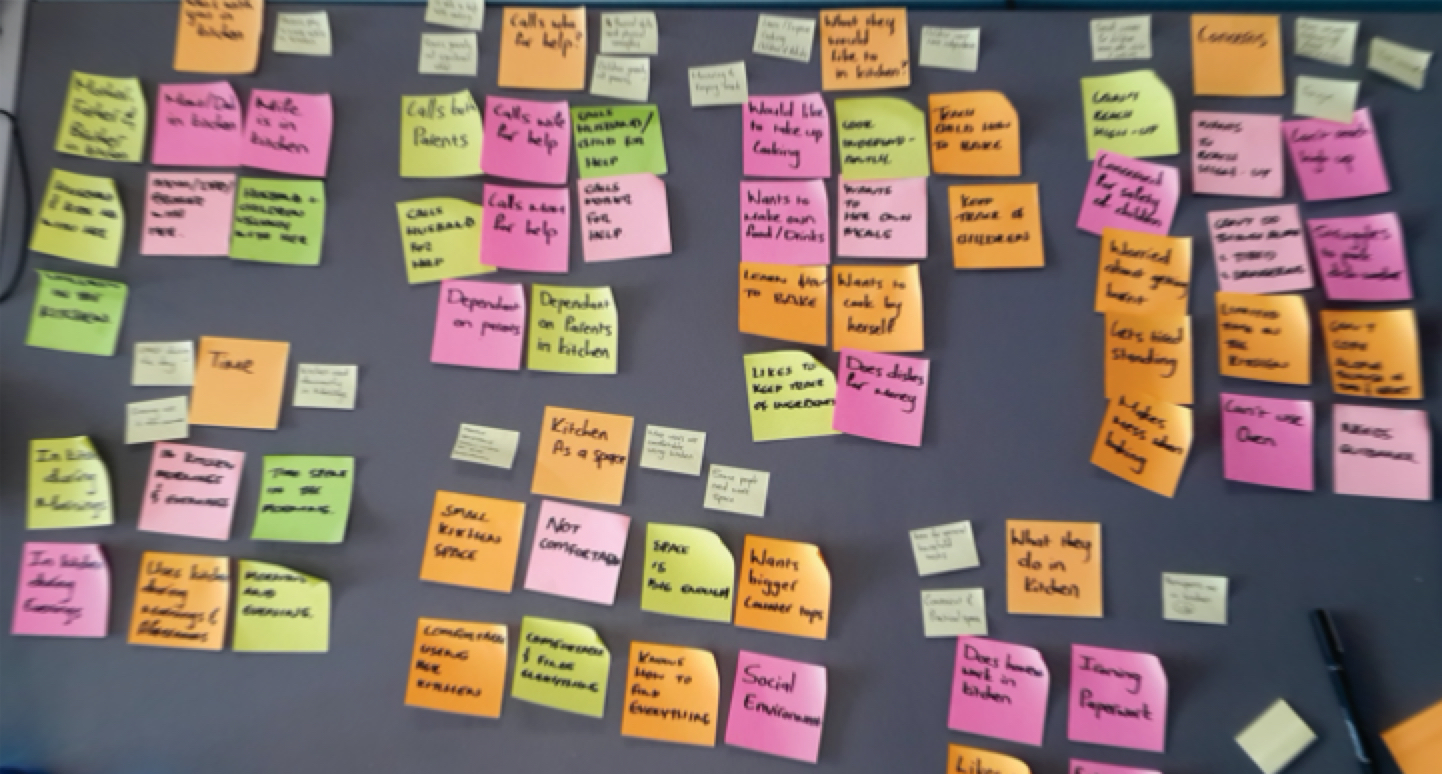
Observations were conducted within the homes of interviewees as well as neighbourhood streets to identify behaviours and problems that residents face everyday but don't notice or talk about. Findings showed that residents familiar with recycling guidelines for product packaging, nor do they know how sort each item.
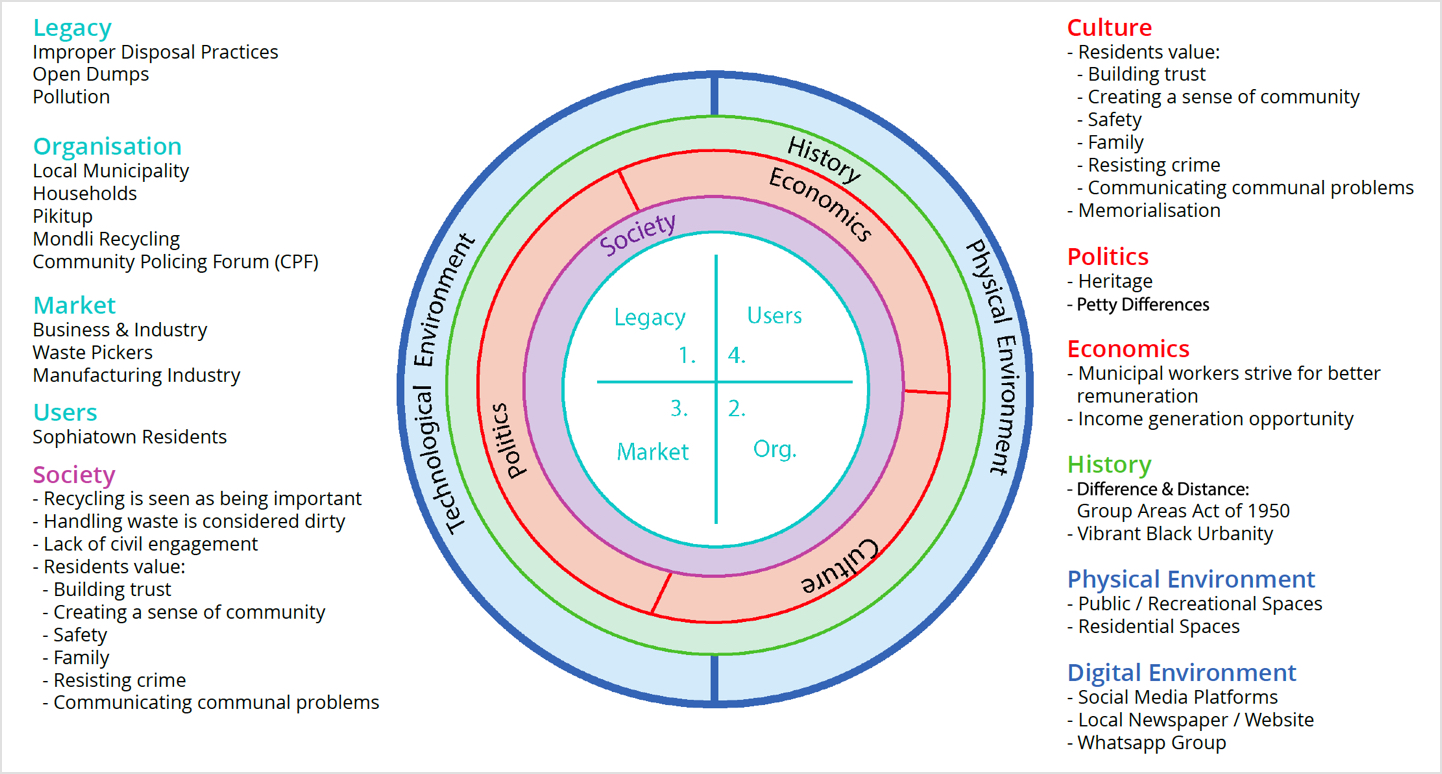
The Firma model, as described by Terence Fenn ↗ and Jason Hobbs ↗, is a meta-framework for design research, strategy and critique. The three primary aims of this model are to:
- To provide a generic research framework that can be applied to broadly and deeply explore and define problem ecologies.
- Identify key areas of concern within the problem ecology and thus assist in articulating the design strategy (i.e. how should the areas of concern be changed)
- Lastly, provide the basis for critiquing the resultant design solution based on knowledge of what the problem was and the desired change.
The Firma model was applied throughout the research, ideation and prototyping stages. This ensured that I was able to detect the necessary research and data, allowing for the validation and guidance of ideation, as well as measuring the overall impact of the design implementation during the prototyping phase
I created Personas to represent a user group who face a similar problems from different perspectives. This provided a clear picture of the user's expectations and the specific needs for which they would most likely need to use a digital product.
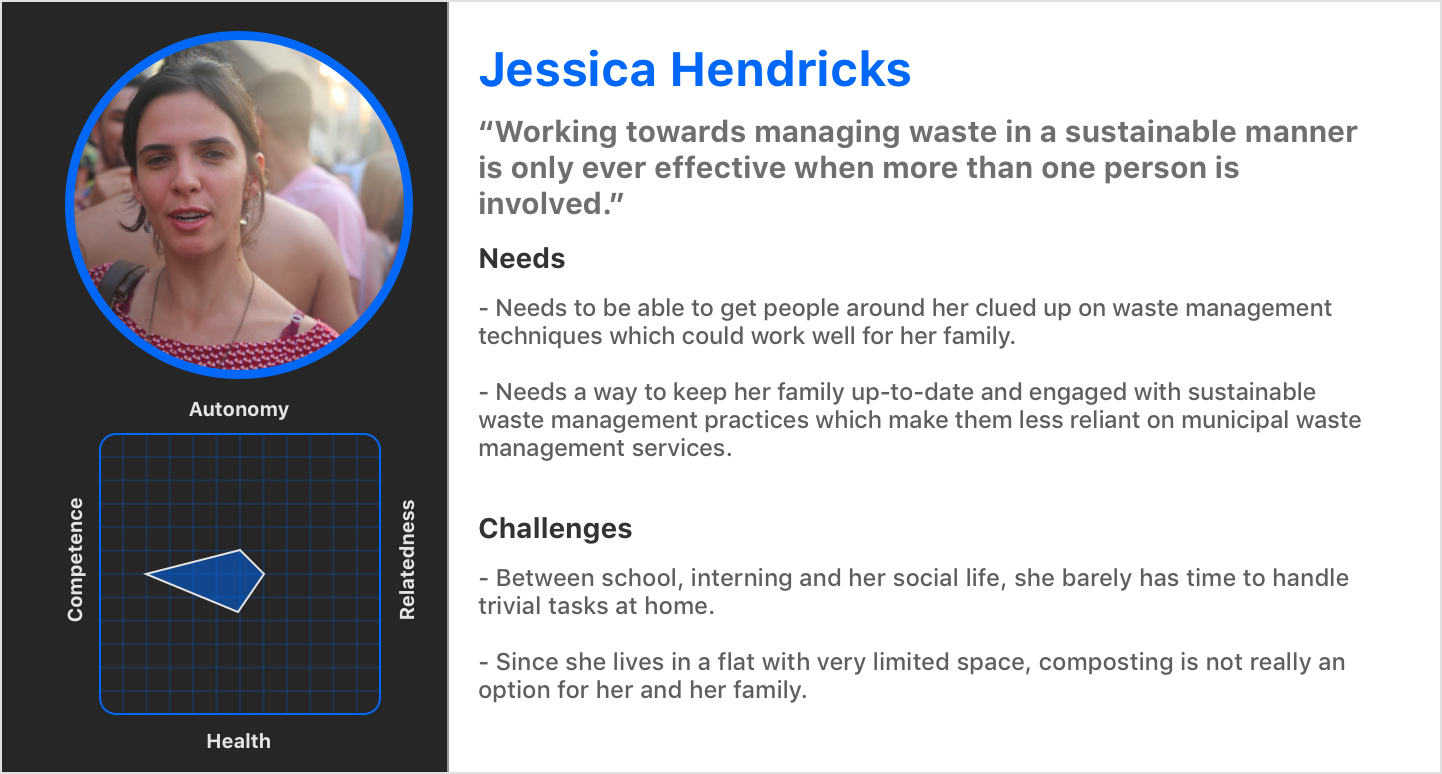

Jessica represents the young adult within the household, who although might be very competent with regards to knowing about concepts such as sustainable waste management, she lacks the authority to make decisions that could lead to the improvement of certain practices within the homespace; however the biggest asset is the ability to influence by sharing knowledge.
Alfred represents an older and authoritative figure within the household, who holds both a degree of influence and ability to implement informed decisions. He is also well known within the neighbourhood and this affords him an extensive network of people to reach out to when dealing with any issues that affect the community.
A common theme that occurs in both Jessica and Alfred's persona models is that their living environment and health are put at a great deal of risk when waste is not collected or disposed of correctly.
Rationale for the solution
At this point of the research process, I was able to clearly provide a diagnosis to the problem - this however is applicable to the area of the problem I have chosen to focus on. Due to the scope of the project, I was well aware of the fact that I could only contribute to the solution ecology by virtue of a product that exists in the technological / digital environment.
Using the Firma model for human centered design strategy, I was able to lay out the strategic phases set out to clearly outline why the problem is a problem, how to act on attempting to contribute to solving the problem and how that might affect residents, as well as what needs to be done to achieve this going forward.
Sophiatown residents are left feeling Frustrated and Vulnerable because their need for Autonomy, Relatedness, Competence and Health are not being met.
This is because:
- Municipal workers go on strike
- Waste is left uncollected
- Residents don’t know how to dispose of the waste themselves
- The continued pilling up of waste poses a threat to their health
By teaching Sophiatown residents about the importance and how to recycle, residents will achieve:
- Autonomy
- Relatedness
- Competence
- Health
Residents will feel:
- Autonomous
- Related
- Competent
- Healthy
If we provide:
- A platform for them to acquire information on how to recycle / manage waste effectively on their own
- A way for them to organise and take action without having to rely on Pikitup
- A means for them to understand that this will better their physical environment

Mapping out the experince
The development of the final concept took shape once I could work out what parts of the puzzle would work best when put together to manifest all of the concepts that were developed through strategy and represented within the experience model as seen previously.
Key to executing on the strategy outlined was mapping out, as ordered by level of fidelity, the following deliverables:
- The experience map
- User journeys
- Task flows
- Sitemap
These deliverables laid the foundation for how the project management tool would be structed and served as a blueprint for how it would look, as well as function.
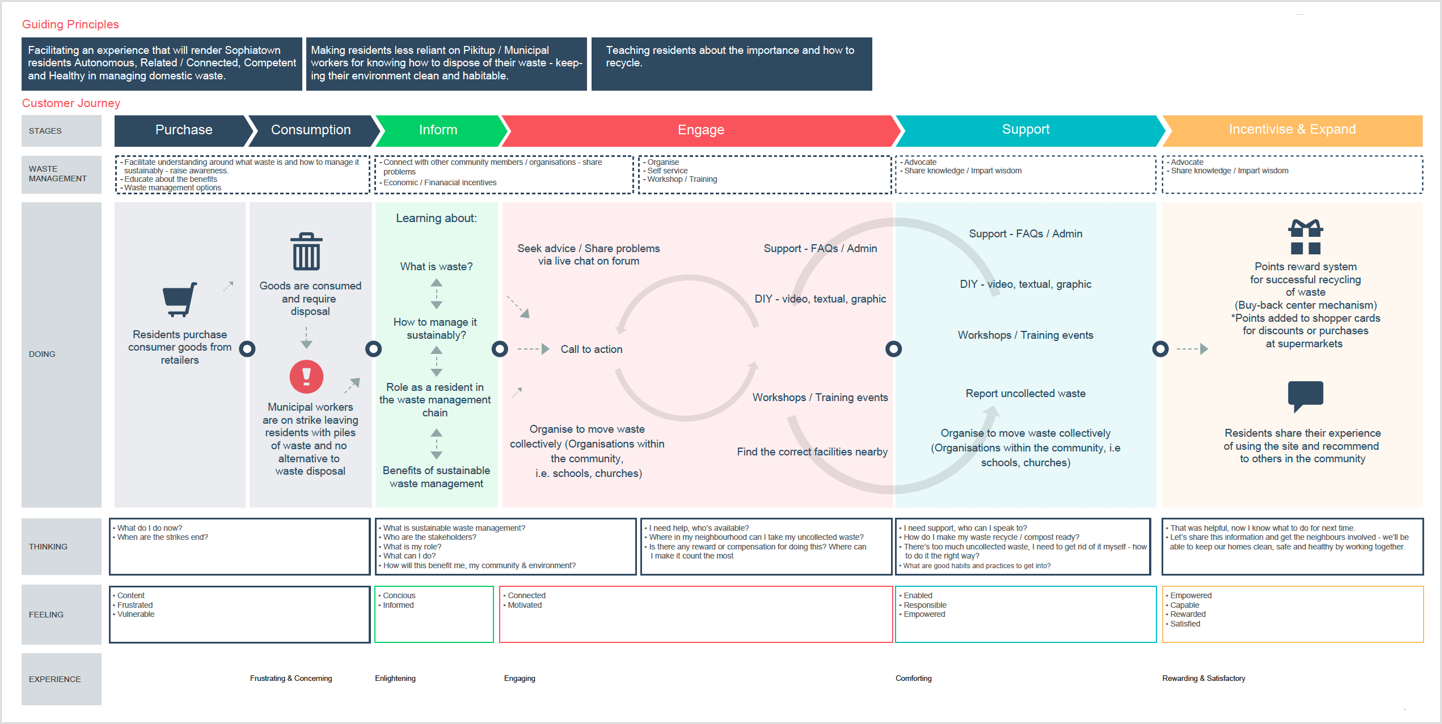
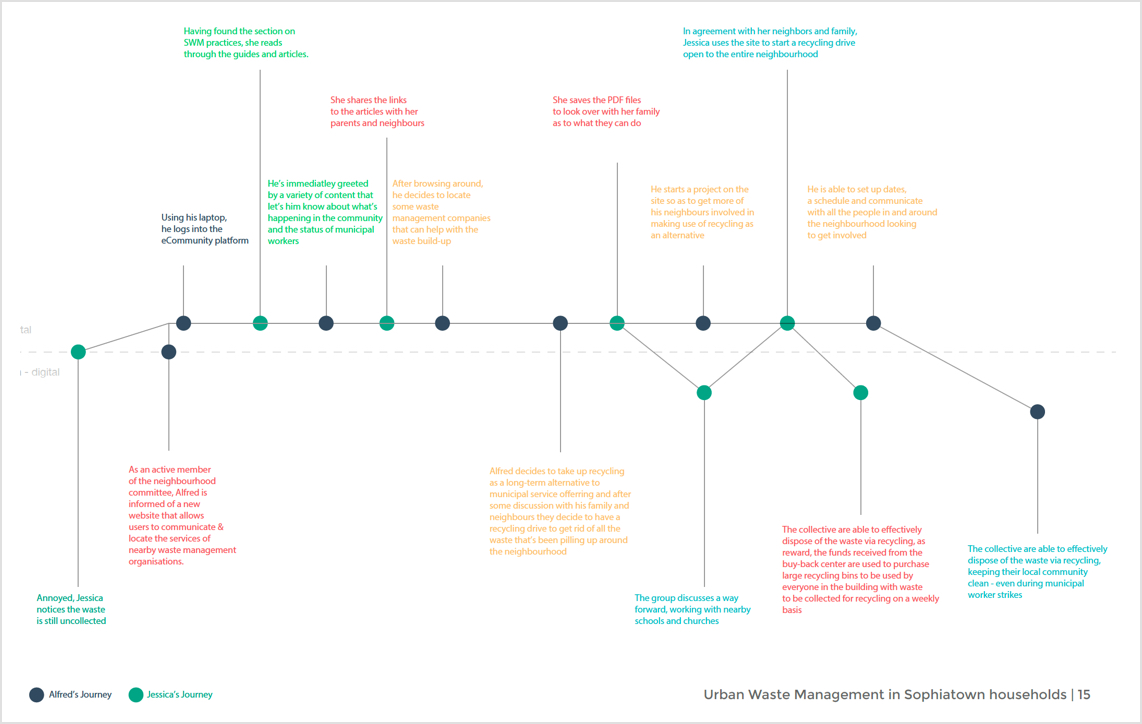



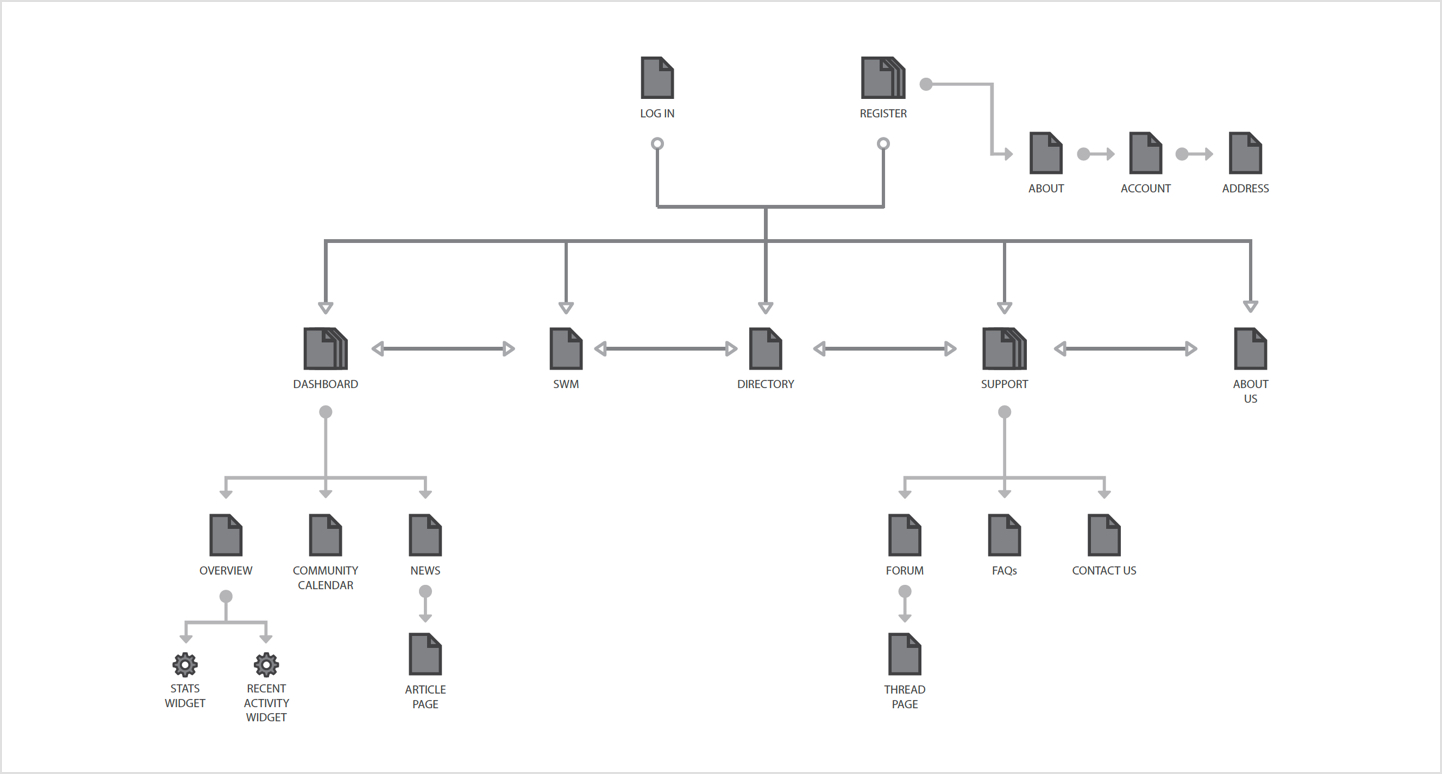
Wireframing
Although all the work I had done up to this point seemed to have followed through on the golden thread built up from the initial research phase of the project. During the ideation and wireframing phases, I quickly realised how I could and needed to open up the solution to becoming bigger than a simple web directory of reading materials and a resource locator.
It was at this phase of my process that I realised that I could scale the solution up into a project management tool that worked in conjunction with the previously identified features. This created a stronger connection with resident's needs and goals that were so strongly rooted in becoming self-sufficient.
